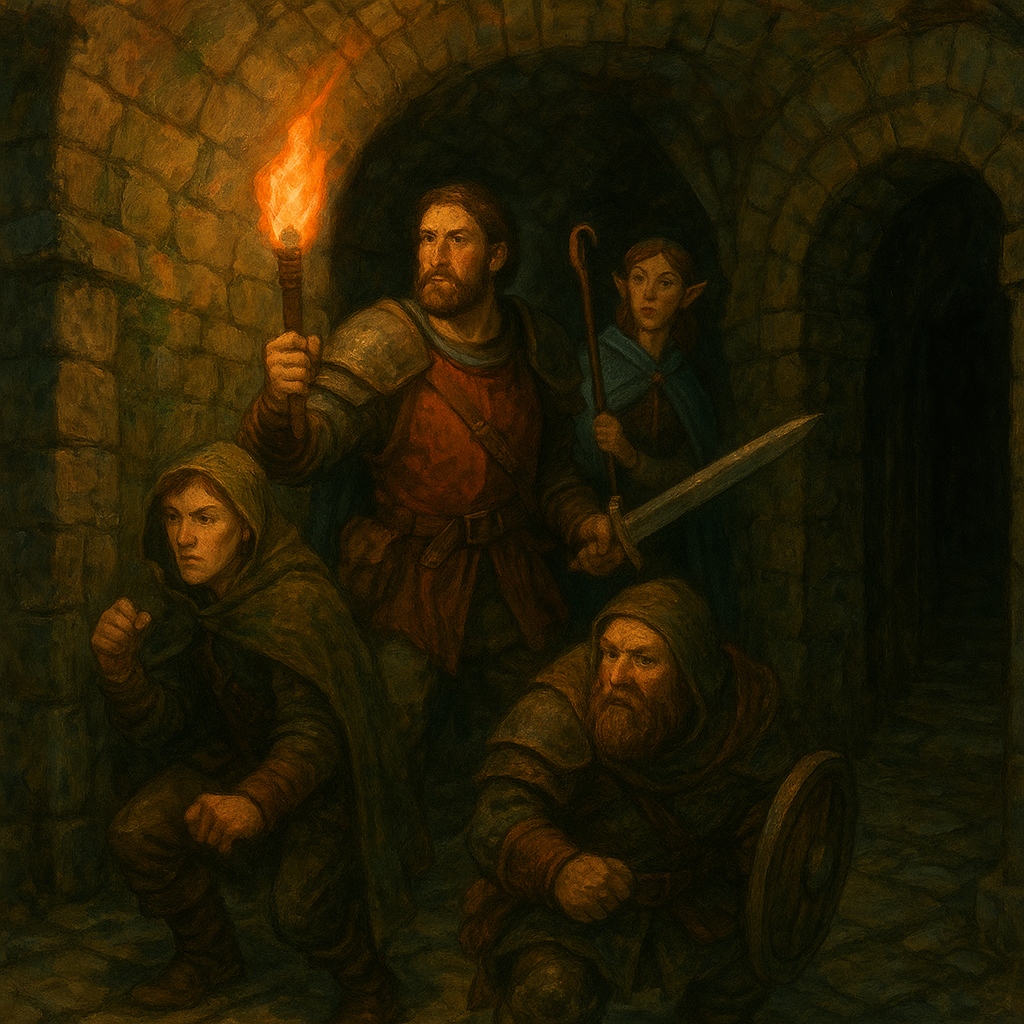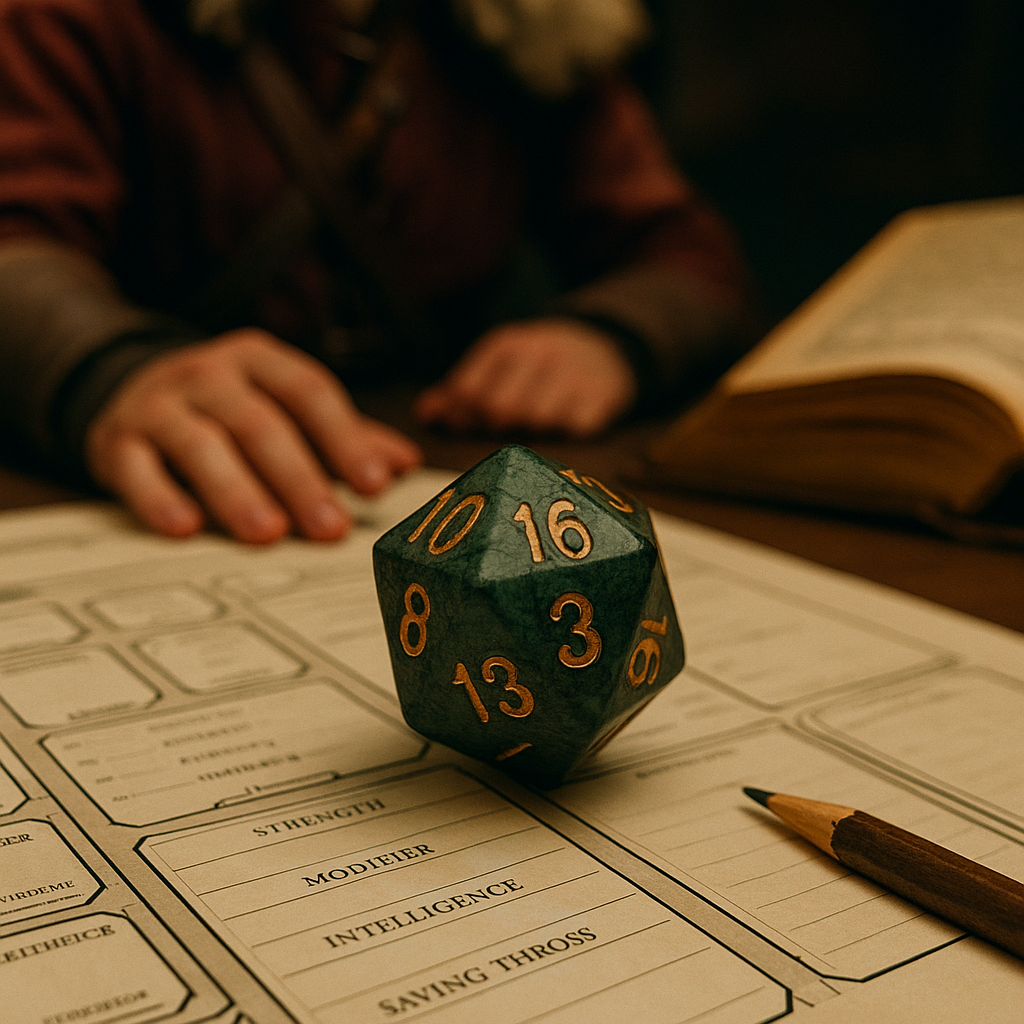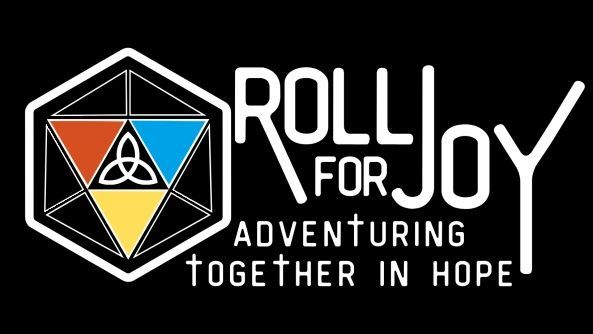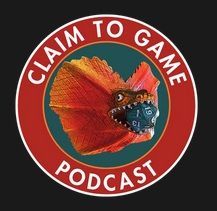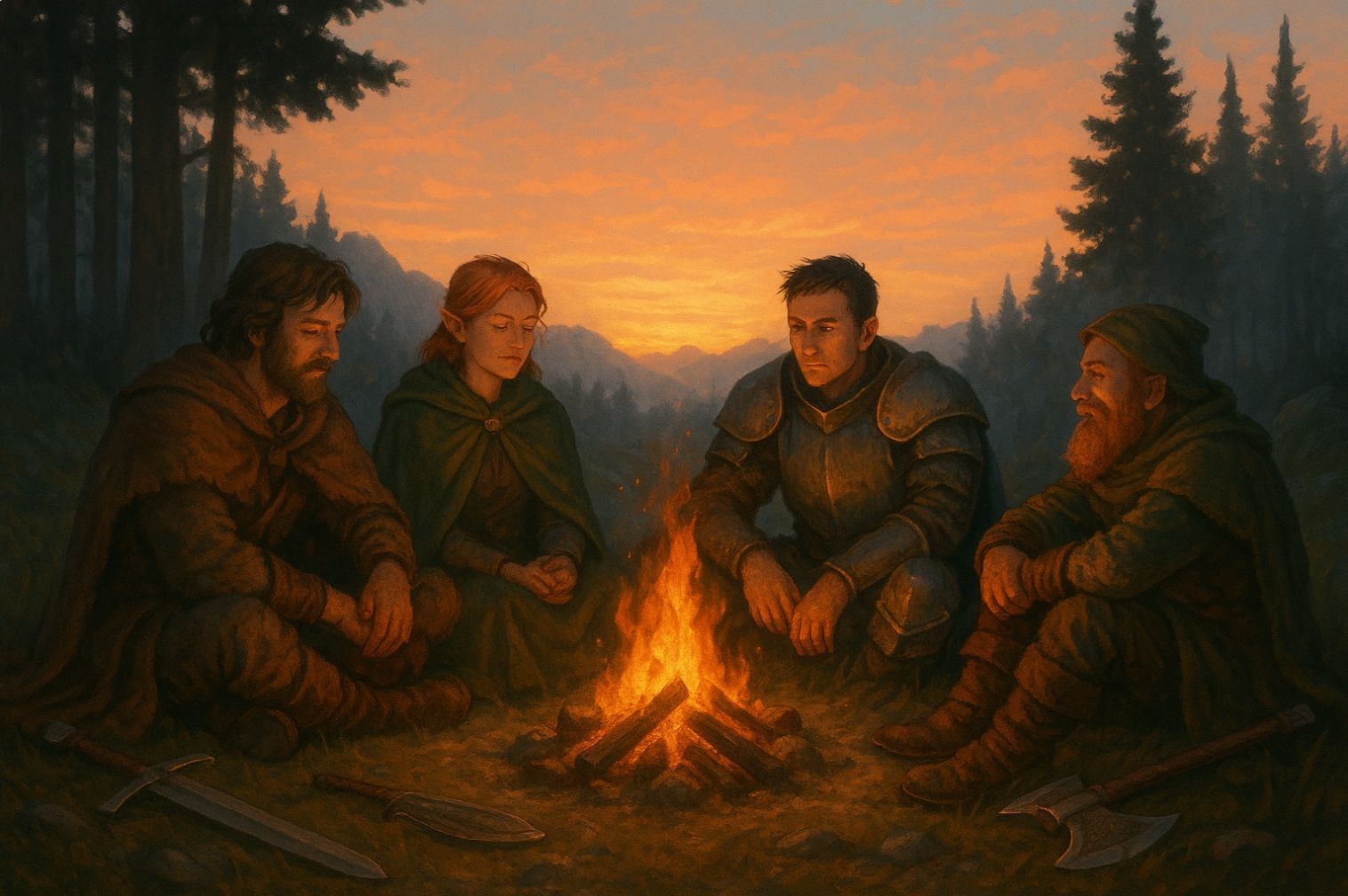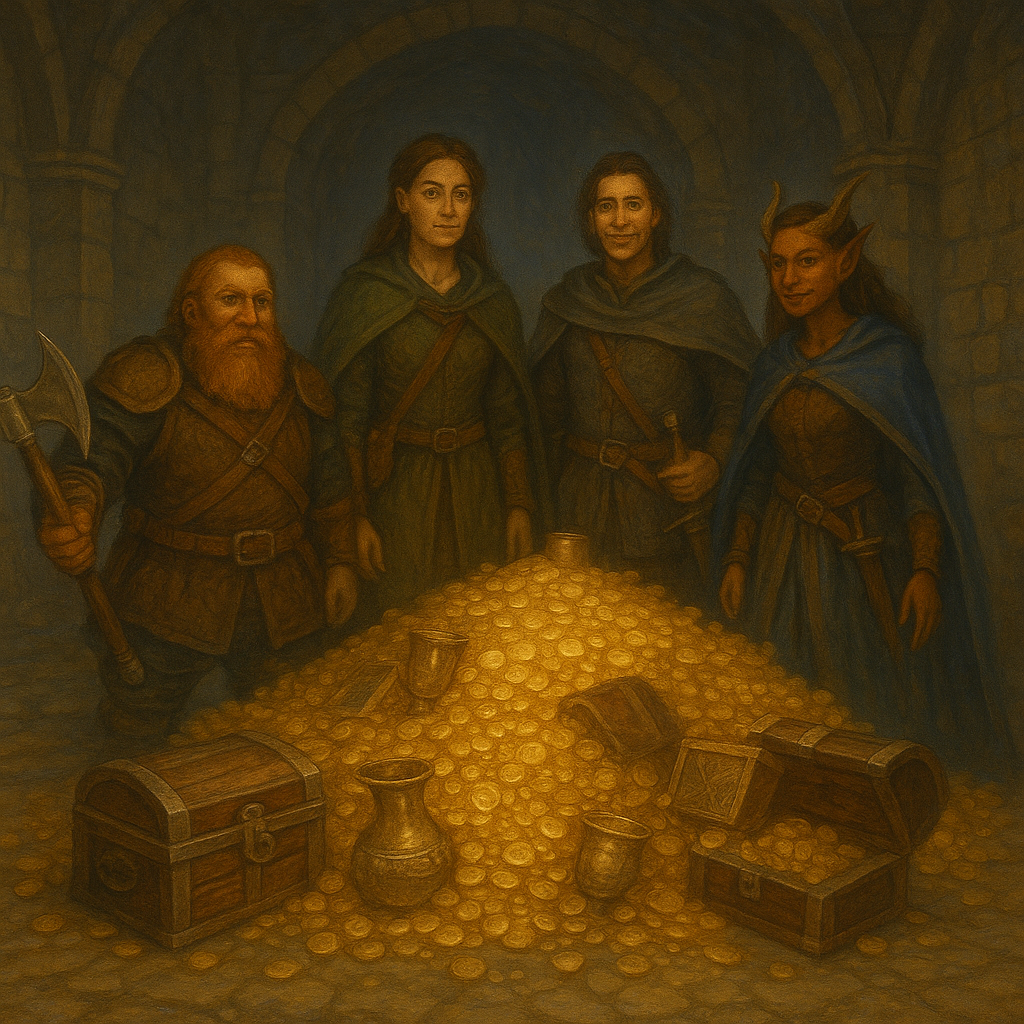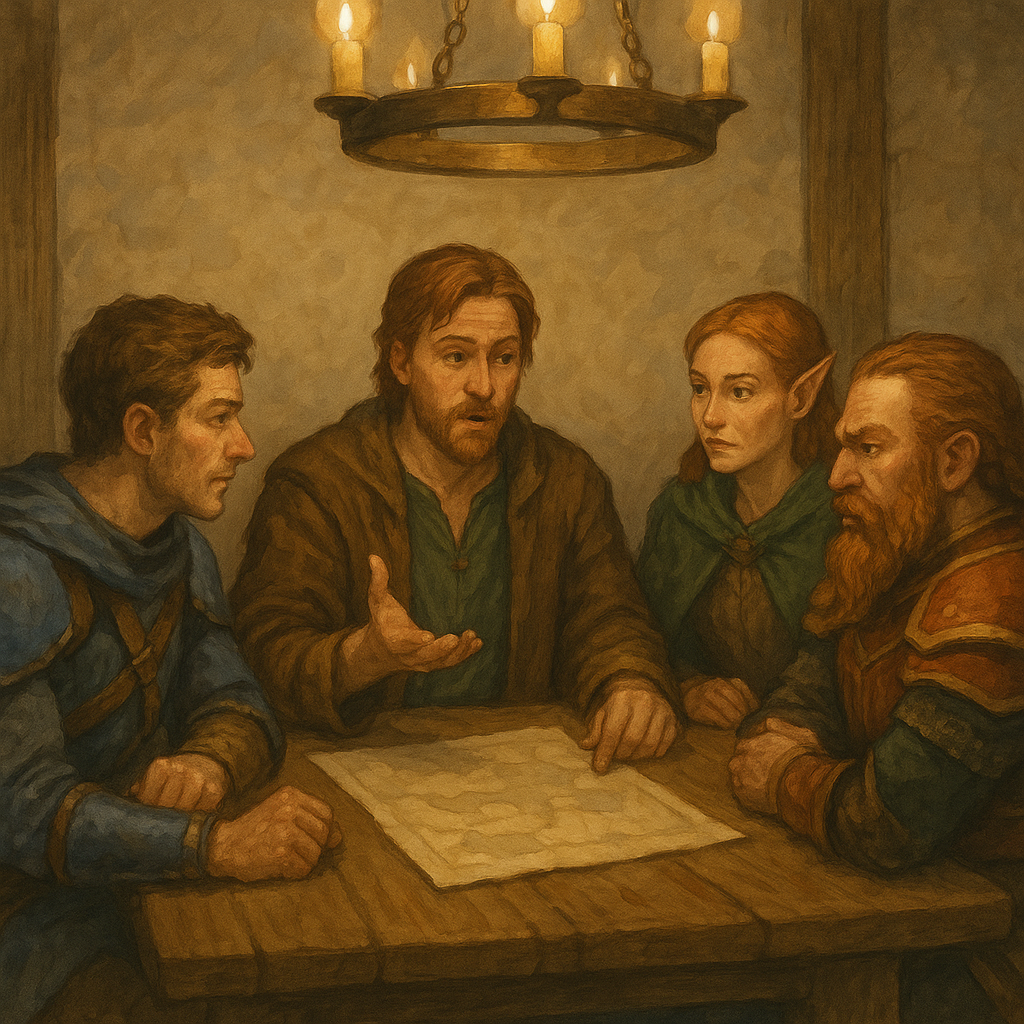The Weight of the Blade: Giving Weapons History and Meaning
so you have a named weapon...
now what?

Dear Readers,
There’s something special about a blade that means something. Not just another +1 longsword tossed in a goblin hoard or a glowing relic looted from a forgotten crypt, but a weapon with gravity—a story forged into the steel. It’s one thing for a fighter to swing a sword. It’s another when that sword carries the memory of a fallen friend, the debt of an ancient pact, or the whisper of something still alive inside it.
Weapons, after all, are not just tools of destruction. In the worlds we craft, they’re repositories of identity. They represent lineage, loyalty, vengeance, sacrifice, and hope. When players start to see their weapons as more than numbers on a sheet, you know you’ve elevated your table from “adventuring party” to storytelling ensemble.
So let’s explore the art and psychology of giving weapons history and meaning—how a DM can turn an object into a symbol, a character, and sometimes, a curse.
The Myth of the Blade
Long before our fantasy heroes ever picked up steel, humanity gave its weapons souls. In myth, a sword is never just a sword. It’s a vessel of destiny.
King Arthur’s Excalibur wasn’t famous for its sharpness; it was famous because it chose him. Elric of Melniboné’s Stormbringer wasn’t terrifying because it could slay—it was terrifying because it hungered. Even Luke Skywalker’s lightsaber isn’t just a tool; it’s the tangible echo of a fallen father, a relic of a broken order.
These aren’t mere objects. They are symbols—extensions of their wielder’s identity, vessels of legacy and emotion. When we translate that into tabletop storytelling, we tap into something deeply human: our instinct to give meaning to the tools we use to shape the world.
A sword that kills monsters is interesting.
A sword that remembers killing monsters—that’s legendary.
The Psychology of Attachment
Players form attachments to objects faster than most DMs expect. It’s a kind of narrative imprinting. A player’s first magic item—especially if it’s earned through trial or gift rather than loot—is often treasured long past its mechanical usefulness.
Why? Because objects embody moments.
When the cleric heals a dying friend with a relic holy symbol, or the rogue steals a dagger from the villain’s belt, that item becomes a token of memory. It represents victory, identity, and sometimes grief. Neuroscientifically speaking, this mirrors how we attach emotion to real-world objects—what psychologists call associative memory. The brain doesn’t separate the event from the object used in it.
So in TTRPGs, when a player names their weapon, that’s storytelling alchemy in action. They’re saying: This isn’t just a stat. This is mine.
You can build on that. Encourage your players to describe how they acquired their weapons, or how they maintain them. Ask: Why do you keep this blade when you could afford better? Their answer will write more story than any random table ever could.
The Weight of the Blade
When you name an item, you give it soul. When you give it history, you give it weight.
Every scar on a sword tells a story. Every notch in a haft or burn along the blade whispers of the battles it’s seen. That’s what separates the trinket from the heirloom. A weapon with weight isn’t necessarily magical—it’s meaningful.
Consider the difference:
- A +1 longsword found in a chest.
- The sword “Gravewake,” once belonging to a knight who fell defending the gates of Durnholde. It was lost with him beneath the rubble and unearthed fifty years later, the steel faintly humming when near consecrated ground.
Both do the same thing mechanically. But only one will make the fighter hesitate when deciding whether to sell it.
The magic isn’t in the mechanics—it’s in the story that sticks to the steel like old blood.
Lore as Emotional Architecture
Lore without emotion is trivia. Lore with emotion becomes memory.
When designing a weapon with a backstory, don’t drown your players in exposition. Instead, drip-feed the truth through play. The goal isn’t to lecture; it’s to let the weapon reveal itself.
For instance:
- The party’s new axe might leave blackened wounds that resist healing. Later, an NPC blacksmith recognizes the metal and mutters, “You shouldn’t hold something forged in mourning.”
- A dagger could whisper in dreams, not to control the wielder, but to weep for the person it once belonged to.
- A warhammer might hum when brought near its twin—lost somewhere across the continent—suggesting a family saga buried under centuries of rust.
Emotion comes not from how old the story is, but from how personal it feels to the player.
Every reveal should pull the weapon closer to the heart of its wielder’s journey.
History Through Use
Meaning doesn’t have to be built before the campaign starts. Some of the best stories come from what the characters do during play.
A sword becomes history when:
- It’s the blade that struck the killing blow on a rival.
- It’s repaired using the bones of a fallen friend’s shield.
- It’s offered as collateral to a demon, then reclaimed through sacrifice.
Encourage your players to modify or mark their weapons as they grow. Every scratch can be a chapter. Let them add a grip of foreign leather, or engrave a name into the hilt after an important victory. These small acts turn a prop into a chronicle.
Over time, that blade won’t just deal damage—it will tell a story.
Names and Nature
A good weapon name does two things: it defines character and suggests history.
“Doombringer” is generic. “Verrin’s Folly” or “The Broken Oath” implies a tale. Names are emotional shortcuts—little narrative magnets that attract curiosity.
Here are a few types of naming patterns and what they communicate:
- Eponymous Blades (Excalibur, Andúril, Frostmourne): Grandeur and legacy.
- Descriptive Blades (Whisperfang, Bloodbound, Skycleaver): Mood and purpose.
- Relational Blades (Father’s Edge, The Widow’s Mercy): Emotional depth.
- Mysterious Blades (The Nameless Sword, The Silent Edge): Narrative potential.
Names that imply contradiction or irony—like “Peacekeeper” for a sword that’s ended wars—create built-in tension. They hint that the blade’s story isn’t finished.
Cursed and Consecrated: Dualities of Meaning
Meaning doesn’t always mean nobility. Sometimes, it’s the curse that gives a weapon life.
A cursed sword might feed off the user’s rage, amplifying both their power and their self-loathing. A sanctified weapon might demand impossible purity, burdening its wielder with guilt every time they falter.
In either case, the weapon becomes a mirror. It reflects not just its wielder’s skills but their soul. That’s when story and psychology merge—when the object becomes a metaphor.
Imagine a blade that grows sharper every time it draws blood, but dulls if it’s used mercifully. Suddenly, combat becomes moral calculus. Do you want to win, or do you want to stay human?
This is the heart of great storytelling weapons: they ask questions.
The Relic Economy: Why Not Every Sword Should Be Special
Not every weapon needs history. In fact, if every sword sings a song, the noise drowns meaning.
Balance is essential. Mundane weapons set the stage for relics to shine. Think of it like emotional pacing in music: silence makes the crescendo powerful.
A player who wields a plain iron sword for ten sessions before finding their grandfather’s lost saber will feel that moment in their bones. It’s the payoff of scarcity.
As DM, resist the urge to shower the party in relics. Let mystery accumulate like dust. The longer the wait, the heavier the blade.
Sentience and the Line Between Ally and Tool
Sentient weapons are storytelling goldmines—but only if used sparingly and intelligently. The danger is turning them into gimmicks or, worse, DM mouthpieces.
A talking sword shouldn’t just be a source of exposition. It should have needs. Maybe it fears being sheathed. Maybe it’s haunted by the faces of those it’s slain. Maybe it loves its wielder in a way that isn’t quite healthy.
Sentient weapons function best when they act as emotional mirrors—reflecting their wielder’s doubts, ambitions, or flaws. A righteous paladin’s sword that begins whispering for vengeance is a test, not a companion.
The secret? Give the weapon agency but not control. It can argue, tempt, or plead—but never dominate. The conversation is where the meaning lives.
Forging Legacy
Some of the most powerful moments at the table happen when a player passes on their weapon.
That transfer—literal or symbolic—cements legacy. It’s the fantasy equivalent of writing a will. When an old blade changes hands, storylines merge.
A few ways to use this dramatically:
- The dying ranger gives their bow to the party’s youngest member. The next arrow fired carries grief and hope.
- A villain’s weapon is reforged and used to defeat their own army, reclaiming its meaning.
- The cleric retires their mace at a shrine, and years later, a new hero finds it.
Passing a weapon is storytelling shorthand for continuity. It says, “This world remembers.”
And memory is the truest form of magic.
The Language of Craft
When you describe a weapon, language is your forge.
Don’t rely on shape or color alone. Describe texture, weight, and the feeling it evokes.
Instead of:
“You find a silver longsword with runes on the blade.”
Try:
“The sword’s balance feels perfect, but its grip is cold as guilt. The runes etched along the fuller hum softly, as if remembering every scream they’ve silenced.”
Suddenly the player doesn’t just see the sword—they feel it.
And that feeling is worth more than any enchantment bonus.
When Weapons Become Characters
Every once in a while, a weapon crosses the threshold and becomes a character in its own right. This can be literal—like a sentient sword—or metaphorical, when the weapon’s story shapes the campaign.
Think of Stormbringer, which is as much a protagonist as Elric himself. Or Mjölnir, which defines Thor’s identity and worthiness.
To make a weapon into a “character,” give it:
- Motivation: What does the weapon want?
- Emotion: How does it react when denied or ignored?
- Arc: Can it change? Be purified, corrupted, or broken beyond repair?
Even without speech, a weapon’s story can unfold through how it behaves. Maybe it glows dimmer in unworthy hands. Maybe it rusts faster after acts of cruelty. Objects that react become alive in the player’s mind.
A sword that watches, judges, or even forgives—those are the ones players remember years later.
Memory as Power
Consider a system where meaning is magic. A blade doesn’t gain strength through runes, but through remembrance.
For example:
- The sword grows keener with each act of mercy.
- A spear deals extra damage to creatures it’s struck before.
- A dagger’s edge dulls if its owner ever lies.
This turns combat into storytelling. Players begin to think morally, not just tactically. The weapon’s growth mirrors the character’s arc.
In narrative terms, this transforms loot into legacy.
Crafting the Origin Story
When designing a historical weapon, think like an archaeologist, not a novelist. Work backwards from the artifact.
Ask:
- Who made it, and why?
- What was happening in the world at that time?
- How has it changed hands, and what was lost in translation?
A weapon’s purpose at creation can contrast with its current use. A peace-forging dagger now wielded by an assassin tells a story through contradiction.
In doing so, you make the item not just part of the world’s lore, but its moral history.
The Role of Mystery
A weapon’s full story should never be known all at once. Mystery invites investment.
Drop clues slowly—dreams, visions, songs, or inscriptions only deciphered after certain milestones. The weapon might respond differently in different regions, hinting at forgotten cultural origins.
Players love to uncover patterns. A mysterious blade transforms the act of combat into an archaeological dig through myth and time.
But always leave some unanswered questions. A little uncertainty keeps the imagination alive long after the campaign ends.
The Burden of Legacy
A powerful weapon often carries moral weight. The wielder inherits not just strength, but expectation.
This creates fertile soil for storytelling. Perhaps the sword once belonged to a tyrant—can its new owner redeem it? Or maybe the blade’s legend overshadows its current wielder, driving them to acts of reckless ambition just to live up to its name.
Weapons of legend are like mantles of destiny. They don’t just add power; they add pressure.
When a player realizes their sword doesn’t just belong to them—it demands something of them—that’s the moment steel becomes story.
The Tragedy of the Broken Blade
Nothing elicits emotion like the loss of a beloved weapon.
When the fighter’s blade shatters, the reaction isn’t just frustration—it’s heartbreak. That’s storytelling gold.
Handled right, the destruction of a weapon can be one of the most poignant moments in a campaign. Perhaps its breaking saves a life. Perhaps its reforging requires sacrifice. Perhaps the shards themselves carry lingering magic—fragments of memory.
A broken sword can become a pilgrimage. A reforged one can become a symbol of rebirth.
In myth and psychology alike, destruction is never just an end—it’s transformation.
Integrating Weapon Lore Into the Campaign
To make a weapon’s history feel real, weave it into the world’s ecology. NPCs should recognize it. Legends should mention it. Enemies should fear or covet it.
The goal is to make the weapon part of the living world, not a museum piece. For example:
- The innkeeper tells a tale of a “silver sword that sang during the siege.”
- A scholar offers to trade rare knowledge for a glimpse of its runes.
- A cult sends assassins to reclaim it for their dark god.
Every external reference reinforces that the weapon matters. The more people in the world react to it, the more alive it feels.
Weapons as Emotional Anchors
Every campaign has emotional highs and lows. The weapon can serve as a visual and symbolic anchor across those tides.
When a player holds the same weapon through betrayal, victory, and grief, it becomes the through-line of their journey. In literary terms, it’s a totem of continuity.
Years later, the player won’t remember every dice roll—but they’ll remember the sword they raised over a fallen friend, or the dagger they left on a villain’s grave.
Those moments stick because the weapon acts as a container for meaning. It’s the physical embodiment of the campaign’s emotional architecture.
The Aesthetic of Memory
Visual storytelling amplifies emotional weight. If your group uses maps or props, consider showing how weapons change visually over time.
Maybe a once-polished blade becomes stained with the ichor of too many eldritch horrors. Maybe a holy symbol carved into a crossguard gradually erodes as faith wanes. Maybe runes appear as the weapon awakens, each glowing mark representing a choice made.
These visual changes help players see their characters’ growth reflected in the object. It’s an artful way of saying: “You have changed, and so has the thing you carry.”
The Subtle Power of Ownership
Letting players shape their weapons’ identities deepens immersion. Encourage them to name, customize, or modify their gear narratively.
Some DMs even allow players to craft their own relics, embedding their personal story into the steel. This might involve forging in dragon fire, binding the soul of a fallen ally, or reforging two broken weapons into one.
When a player participates in creating the myth, they care infinitely more about preserving it.
The Weapon as Burden
A sword that kills the wielder’s enemies is powerful.
A sword that also kills their conscience—that’s unforgettable.
Weapons that cost something to use create powerful drama. A blade that drains vitality, harms loved ones when unsheathed, or brings omens of doom each time it’s drawn turns every combat decision into moral arithmetic.
This doesn’t have to be mechanical; it can be narrative. Perhaps each use draws the attention of celestial beings, or reawakens the soul trapped within.
In such cases, the weapon becomes not a gift, but a cross to bear. The greater the burden, the greater the storytelling reward.
The Cultural Dimension
In many fantasy settings, weapons carry cultural significance beyond their function. A dwarven hammer might be a symbol of craftsmanship and faith. An elven blade might embody artistry and lineage.
Tapping into cultural storytelling makes a weapon feel rooted. When a sword’s design language, rituals of use, or forging process reflects the world’s anthropology, it gains texture.
Let characters discover cultural context through interaction. A foreign merchant might recoil at the sight of a “blooded” weapon. A temple might refuse entrance to anyone wielding a blade forged in necrotic fire.
Each of these moments adds not just lore—but social meaning.
The Passing of Time
Time is a master storyteller. A weapon that has passed through centuries of use accumulates a patina of myth.
A clever DM can use time itself as a storytelling mechanic:
- A blade that changes abilities based on the phase of the moon it was forged under.
- A weapon that must “sleep” for a century between wielders.
- A relic that becomes stronger when brought back to the place of its creation.
Each of these reinforces that the world—and its relics—existed before the players arrived and will endure after they’re gone.
Creating Player Investment
The best way to give a weapon meaning is to let players build its story.
Start small. Introduce a mundane weapon early—perhaps gifted by an NPC mentor. Over time, layer in moments: a rescue, a betrayal, a reforging, a renaming. Each step adds depth without needing mechanical bloat.
Then, when the blade finally becomes magical—when it “awakens”—it feels earned. The power reflects the journey, not the loot table.
This transforms acquisition into apotheosis.
The Final Cut: Symbolism and Closure
All stories end, and so must the stories of our blades.
When a campaign closes, consider how each weapon’s story resolves. Does the paladin lay their sword upon the altar, symbolizing peace? Does the rogue melt their daggers into rings for the party as a gesture of loyalty? Does the warlock cast their blade into the sea, whispering, “No more”?
Endings matter. Objects outlast their owners. That’s why we build myth around them.
Every sword sheathed at the end of a tale is a monument—not to war, but to the people who carried it through the fire and out the other side.
Epilogue: The Story in the Steel
Dear Readers, every weapon at your table has the potential to become something more. It can be a relic of friendship, a mark of sin, a symbol of redemption. When we imbue our game worlds with that level of emotional craft, we remind ourselves why we play these stories in the first place: to make meaning out of imagination.
So the next time your players find a blade, resist the urge to describe its stats. Instead, describe its weight. Describe the hum of memory when it’s held. Describe how, for a brief moment, it feels like the weapon is holding them back—waiting, perhaps, for someone worthy to finish the story it began.
Steel remembers. And in your worlds, every memory is a spark waiting to catch fire.
Until next time, Dear Readers...















